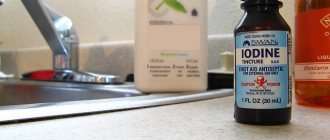What causes the smell and taste of acetone?
The main reasons for the development of acetone taste and smell may be:
- improper care of melons;
- excessive application of chemicals;
- treatment with special mixtures for long-term storage and preventing spoilage;
- due to premature failure, before ripening, and long-term subsequent storage.
The taste and smell of acetone arise not only from improper care or excessive use of chemical fertilizers when growing.
This feature may arise because the berries from the melon bush were picked ahead of schedule. Accordingly, an unripe melon fruit will begin to ripen under unnatural conditions, producing chemical compounds such as aldehyde and ketone. During the fermentation that will occur during the storage period of such melons, acetone is formed from these substances, which will cause an unpleasant taste and smell. Did you know? Not only melon can give off acetone, but also, for example, a banana. If it was picked unripe (and this is exactly what is done so that the fruits can be transported), then ripening processes begin to take place inside and a chemical reaction is inevitable. In your hands, such a banana will simply spread into a dough due to the increased alcohol content and its effect on biological fibers.
The world's first nuclear power plant (NPP) was built in the USSR ten years after the bombing of Hiroshima. Almost the same specialists took part in this work as in the creation of the Soviet atomic bomb - I. Kurchatov, N. Dollezhal, A. Sakharov, Yu. Khariton and others. It was decided to build the first nuclear power plant in Obninsk - there already was a fully operational turbogenerator with a capacity of 5000 kW. The construction of the nuclear power plant was directly supervised by the Obninsk Physics and Energy Laboratory, founded in 1947. In 1950, the technical council, from several proposed options, chose a reactor developed by the Khimmash Research Institute, headed by N. Dollezhal. On June 27, 1954, the world's first nuclear power plant produced industrial current.
Currently, it no longer works and serves as a kind of museum. But the experience gained during its construction was then used in the construction of other, more powerful and advanced nuclear power units. Nuclear power plants now operate not only in our country, but also in the USA, France, Japan and many other countries. What was the first peaceful reactor?
The principle of operation and design of the reactor became clear to the reactor developers back in the mid-1940s: graphite blocks with channels for uranium blocks and control rods - neutron absorbers - were placed in a metal case. The total mass of uranium had to reach a critical mass, at which a sustained chain reaction of fission of uranium atoms began. Moreover, on average, for every thousand neutrons generated, several did not fly out instantly, at the moment of fission, but a little later they flew out of the fragments. The existence of these so-called delayed neutrons turned out to be decisive for the possibility of a controlled chain reaction. Although the total number of delayed neutrons is only 0.75%, they significantly (by about 150 times) slow down the rate of increase in the neutron flux and thereby facilitate the task of regulating the reactor power. During this time, by manipulating the neutron-absorbing rods, you can interfere with the course of the reaction, slow it down or speed it up. In addition, as it turned out, the neutron flow significantly heated the entire mass of the reactor, so it is sometimes called the “atomic boiler.” This scheme served as the basis for the creation of the first reactor for a nuclear power plant. During construction, the design of an industrial reactor was taken as a basis. Only instead of uranium rods, uranium heat-removing elements - fuel rods - were provided. The difference between them was that the water flowed around the rod from the outside, while the fuel rod was a double-walled tube. Enriched uranium was located between the walls, and water flowed through the internal channel. To prevent it from boiling and turning into steam right there in the fuel rods - and this could cause abnormal operation of the reactor - the water had to be under a pressure of 100 atm. From the collector, hot radioactive water flowed through pipes into a heat exchanger-steam generator, after which, after passing through a circular pump, it returned to the cold water collector. This current was called the first circuit. Water (coolant) circulated in it in a closed circle without coming out. In the second circuit, water acted as a working fluid. Here it was non-radioactive and safe for others. Having heated up to 190 °C in the heat exchanger and turned into steam with a pressure of 12 atm, it was supplied to the turbine, where it carried out its useful work. The steam leaving the turbine had to be condensed and sent back to the steam generator. The efficiency of the entire power plant was 17%. At the nuclear power plant, the control system for the processes occurring in the reactor was also carefully thought out, devices were created for automatic and manual remote control of control rods, for emergency shutdown of the reactor, and devices for replacing fuel rods.
Source:
- evolutsia.com - the emergence of nuclear power plants
- top-invents.info—the world's first nuclear power plant
The dangers of acetone taste
If the fruit of the melon bush does not have a single flaw, everything inside is smooth, clean and beautiful, then some kind of chemical is the culprit of the acetone smell. This conclusion already emphasizes the fact that consuming such melons is dangerous, and therefore, if the melon smells of acetone and at the same time looks absolutely normal (without putrefactive damage, cracks in the skin, stains on the ends, etc.), then eating it can be dangerous.
To minimize the possibility of poisoning with such a chemically hazardous product, you should purchase it from trusted sellers who are engaged in gardening themselves, or, what is even better and safer, grow this melon crop yourself in your summer cottage. It is also not recommended to purchase berries after the end of the season (from mid-late September), because then the danger of additional chemical treatments for long-term storage and avoidance of spoilage increases significantly.
Important! If you detect smells or tastes uncharacteristic of melon berries, it is not recommended to eat it. Be especially careful that such a product does not get into the hands and stomachs of children, because their immune system may not be able to cope with the toxin, which will lead to poisoning.
What to do if alcohol has an unpleasant odor?
There are several methods that will correct the mistake of a novice distiller. They will help give the moonshine a brighter, more pleasant aroma.
So, what to do if moonshine has an unpleasant odor?
- You can purify the distillate using manganese. Place several crystals, literally 2-3 grams of permanganate, in a 3-liter jar filled with moonshine. When the manganese precipitates, shake the jar, then close it with a lid and place in a water bath for 15 minutes (the bath temperature should be 50–70 degrees).
- You can also use baking soda; it removes fusel oils and harmful impurities well. To improve the smell of 1 liter of distillate and rid it of harmful impurities, you should add 10 grams of soda to the jar and fill it with moonshine. Mix everything thoroughly using a spoon or wooden spatula, let the drink stand for 30 minutes, and then mix everything thoroughly again and put the jar with the distillate in a dark place for 12 hours. Then filter the moonshine and drain the sediment.
- Orris root will help correct the mistake, but it is quite difficult to find, especially for a city resident. The root is crushed and the moonshine is allowed to stand for 12 days. Then the product is filtered using gauze or thick cloth. To change the aroma of 1 liter of distillate, you will need about 30 grams of orris root. This method is considered quite effective, but is rarely used due to the fact that the raw materials are rare.
- The next method can be called one of the cheapest. To clean, you only need a refrigerator and a glass bottle. Pour the drink into a container and place it in the freezer. When water freezes, harmful impurities will freeze along with it. But moonshine, of course, will remain liquid. It is simply poured into a suitable container. If after the procedure the alcohol smells unpleasant, then you should do the same a few more times.
- Cleaning with charcoal will also save you from trouble. You can use birch charcoal, a filter with a carbon cartridge, or activated carbon in tablets. The substance, like a sponge, absorbs harmful impurities and fusel oils, which will significantly improve the quality of the drink, make it softer and more pleasant and at the same time eliminate the odor.
This is interesting: Bread moonshine with grains and crackers
But perhaps the most effective way can be considered re-distillation. It helps to significantly improve the taste and smell of alcohol.
Repeated distillation is carried out with division into fractions; cutting off the heads and tails helps rid the drink of impurities and fusel, making it clean, strong and suitable for drinking.
Often problems with moonshine arise precisely when the selection of the drink is carried out in violation of the rules. A distillation column can also correct the situation.
Is it possible to eat this melon?
Considering the fact that in most cases the culprits of the acetone smell and taste are chemical treatment or the onset of spoilage processes, eating such a berry is not only impossible, but also dangerous to health. In the best case, you will not cause serious harm and all that this threatens will result in mild nausea and headache, and in the worst case it can lead to hospitalization with acute poisoning. Therefore, such fruits cannot be consumed. And then, it’s unlikely that anyone will have the desire to eat a melon that smells of acetone.
How to choose a good melon
In order to make the right choice of high-quality, tasty and, most importantly, safe and healthy melon, you should know and apply a number of recommendations for selection, reduced to a number of rules during external inspection and when checking by touch.
Inspection
During the inspection, you should carefully search the entire surface of the fruit for putrefactive lesions, spots, dots, cracks, dents or other damage that would indicate a low-quality product. Other indicators will be bluish or pinkish spots, indicating chemical aerosol treatment. Particular attention should be paid to the smell. The melon should smell like melon. And there should not be any admixtures of sour, rotten, moldy or acetone odors.
Important! If the melon has no odor, it means it has definitely undergone chemical treatment. It is not recommended to buy such a melon.
Touch test
Another important step in testing for suitability will be feeling the surface of the fruit. This needs to be done closer to the ends, because it is from there that the spoilage processes begin, and if there are any, then in those areas your fingers will feel the soft spots. Also, lift the berry and check whether its impressive size (which is what is often sold in stores) matches its weight. If the answer is negative, then there are voids inside, or decomposition processes have begun.
How to remove the smell of acetone from moonshine – 1001 salads
The question of why moonshine smells like acetone most often arises among inexperienced moonshiners.
The fact is that distillers with experience know the answer to this question and have often encountered a similar problem. There are several reasons why a distillate or mash has a similar “aroma.” The smell may resemble vinegar, acetone or even ammonia. Moonshine without smell
But don’t despair, the feeling of acetone is not a death sentence for the distillate, since everything is fixable, and even the unpleasant smell can be removed. But in order to do everything correctly, the reason for the appearance of such “strangeness” must be established.
Where does moonshine have an unpleasant smell?
The pungent aroma and taste of homemade alcohol is explained by the presence of fusel oils in it (read: ways to clean moonshine from fusel oils) and other harmful compounds. In some cases, moonshine may smell like acetone:
- if the mash sits for a long time after fermentation . During the distillation process, especially when selecting the head fraction, the characteristic smell of acetone is felt;
- when the mash turns sour . The final product from such raw materials is of low quality, and the yield of moonshine will be small;
- in the absence of a shutter . If the mash container does not have a water seal, foreign bacteria may enter it. Also, the mash will interact with oxygen, and this negatively affects the aromatic and taste qualities of the product.
Important! It is worth following all the rules for preparing mash. Properly made and aged mash significantly improves the aroma of the finished drink.
Found an error in the text? Select it, press Ctrl + Enter and we will fix everything!
The question of why moonshine smells like acetone most often arises among inexperienced moonshiners. The fact is that distillers with experience know the answer to this question and have often encountered a similar problem. There are several reasons why a distillate or mash has a similar “aroma.” The smell may resemble vinegar, acetone or even ammonia.
But don’t despair, the feeling of acetone is not a death sentence for the distillate, since everything is fixable, and even the unpleasant smell can be removed. But in order to do everything correctly, the reason for the appearance of such “strangeness” must be established.
How to remove the smell at the initial stage of cooking?
You need to take care of the taste and aroma qualities of moonshine even before distillation .
There are a few little tricks to help make the smell less offensive:
- To reduce the unpleasant odor, it is recommended to use dry yeast for fermentation instead of pressed ones .
- beets or potatoes as raw materials . The yield from such a mash will be good, but the smell will be very difficult to fight off.
- After the mash has finished working, it should be lightened. This is done using bentonite (crushed white clay). After adding bentonite, the mash is thoroughly mixed and left to settle for about a day. Then it must be drained from the sediment and passed through a paper filter. It will become less cloudy, and in some cases even transparent . This process has a positive effect on the aroma of moonshine . After all, along with bentonite, some of the harmful impurities that contribute to the unpleasant odor settle to the bottom.
Good to know! Bentonite is suitable for sugar-based mash. To clarify fruit or berry mash, you should use gelatin , because... it perfectly holds together the compounds that make up the yeast sediment.
Activated carbon
Many odorless moonshine recipes include additional cleaning with this substance. You can easily buy it at your nearest pharmacy.
Coal absorbs many of the chemicals found in distilled moonshine. From crushed coal you can make filters using gauze and cotton wool.
But it’s best to throw it directly into alcohol, leave the drink overnight, and then filter it. In this case, a good result will be guaranteed.
How to get rid of odor during the distillation process?
To eliminate the fusel spirit during the first distillation, it is necessary to separate the harmful fractions obtained at the beginning and at the end of distillation. Those that stand out at the beginning are called “heads”, and those at the end are called “tails”.
The total number of heads is about 10% of the total volume of raw alcohol produced. You can determine when you need to finish selecting heads using the old-fashioned method: wet a small piece of paper in a stream of distillate and bring it to the fire .
If the paper lights up with a blue flame, this means that the selection of heads must be stopped. In addition, harmful initial fractions are easily identified by the nauseating smell of fusel. After all the heads come out, the characteristic aroma of pure alcohol without impurities will appear.
Then the selection of the useful part – the “body” – begins. This part has virtually no foreign odors. The body, during the first distillation, is selected to 30-40º in the stream . After selecting the useful part, the tails remain. They can be collected separately and added during subsequent distillations of the mash. They slightly increase the yield of the useful part.
Experienced distillers often upgrade their moonshine stills by installing additional equipment, such as a steamer or bubbler. These devices also significantly reduce the unpleasant aroma and soften the taste of moonshine, making it cleaner.
Folk remedies
Traditional medicine is rich in a variety of remedies and recipes that can improve the functioning of the gastrointestinal tract, as well as cure certain diseases.
In addition, there are products that not only improve the functioning of internal organs, but can freshen breath from the mouth and rid people of the aroma of acetone.
True, traditional methods are a temporary solution, since you will need to accurately understand the cause and remove it, and not mask your breathing.
You can prepare compotes from fruits or herbs to remove the smell, use fresh cranberry juice, sea buckthorn juice, as well as various decoctions and infusions.
How to remove odor correctly after the first distillation?
At the end of the first distillation, raw alcohol is obtained, which must be diluted with water to 20-30º . This is done to make it easier to separate harmful impurities. At this stage the main cleaning is carried out. Let's look at the best recipes for enhancing a product at home.
Aromatization
To give a pleasant aroma, moonshine is infused with various fragrant products , such as spices, fruits, berries, nuts, etc. The choice depends on individual taste preferences.
There are special aromatic concentrates that give homemade moonshine the taste and smell of whiskey, cognac or brandy . Such supplements can be ordered online or in specialized stores.
More on the topic: How to improve the characteristics of moonshine with flavoring additives?
Freezing
There is a way to clean moonshine from harmful impurities using low temperatures . As you know, alcohol does not freeze in the cold; only water containing some harmful compounds will freeze.
However, there are opponents of this method who believe that when toxic substances freeze, they do not remain in the water, but, on the contrary, pass into alcohol, making it even more harmful.
Read in more detail: Self-cleaning moonshine with cold
Potassium permangantsovka
Purification of the distillate with potassium permanganate helps to slightly reduce the unpleasant odor . Potassium permanganate removes only a small part of harmful impurities and is not capable of providing comprehensive cleaning.
More on the topic: Methods of cleaning with potassium permanganate
Coal
It is an effective means of purifying distillate. It takes away most of the fusel oils and other substances that negatively affect health. It is recommended to use activated carbon tablets, because... they are completely safe for humans.
You can also use charcoal , but you need to be sure of its purity. The use of household carbon water filters has been quite successful.
Source: https://vinofil.ru/alkogolizm/braga-pahnet-acetonom.html
Main reasons
If alcohol smells distinctly like acetone, there are several reasons for this:
- The heads, that is, the first fraction, most often have a similar smell. If distillation has just begun, then it is worth continuing it until the body begins to appear - the main product, which will be used for internal consumption. The heads contain a large amount of impurities and fusel oils, for this reason they may have an acetone smell. This can be corrected by fractional distillation.
- Braga stood there for a long time. In most cases, problems begin when the mash sits for a long time and is then sent for processing. This product produces moonshine of low quality, which may have an unpleasant odor during processing. But again, this rule applies only to the head fraction; the rest of the moonshine will have a completely acceptable aroma.
- The mash has turned sour. Another reason why moonshine may smell like acetone or vinegar. At the same time, you should pay attention to the taste of the mash, which will be sour. However, souring of the mash will certainly affect the final yield of the distillate. There will be little moonshine made from such raw materials, and the taste and smell of the finished drink will hardly be called pleasant.
- Incorrect distillation. If a product has been processed in violation of the rules, it may develop an unpleasant “aroma.” The smell can occur if the heads were not selected and, as a result, harmful impurities and oils got into the moonshine. For this reason, it has the smell of acetone or vinegar.
- It will also smell unpleasant if inappropriate materials were used in the process of creating the alcoholic product. Metal ions can enter the distillate or mash and affect its organoleptic characteristics. For this reason, it is better to put it in stainless steel containers, and distill moonshine using a copper or stainless steel apparatus.
- Often a sour, unpleasant aroma appears in the mash that was placed incorrectly. It is worth noting that problems mainly arise in the absence of a water seal. The mash may sour or overstay. A water seal will help identify the problem: if fermentation has stopped, the device will simply stop gurgling. The same applies to stopping the fermentation process of wort.
However, you should not be upset if moonshine smells unpleasant for one reason or another. After all, everything can be fixed and even an unacceptable smell will go away if you know simple tricks.
Found an error in the text? Select it, press Ctrl + Enter and we will fix everything!
The question of why moonshine smells like acetone most often arises among inexperienced moonshiners. The fact is that distillers with experience know the answer to this question and have often encountered a similar problem. There are several reasons why a distillate or mash has a similar “aroma.” The smell may resemble vinegar, acetone or even ammonia.
But don’t despair, the feeling of acetone is not a death sentence for the distillate, since everything is fixable, and even the unpleasant smell can be removed. But in order to do everything correctly, the reason for the appearance of such “strangeness” must be established.
What to do if alcohol has an unpleasant odor?
There are several methods that will correct the mistake of a novice distiller. They will help give the moonshine a brighter, more pleasant aroma.
So, what to do if moonshine has an unpleasant odor?
- You can purify the distillate using manganese. Place several crystals, literally 2-3 grams of permanganate, in a 3-liter jar filled with moonshine. When the manganese precipitates, shake the jar, then close it with a lid and place in a water bath for 15 minutes (the bath temperature should be 50–70 degrees).
- You can also use baking soda; it removes fusel oils and harmful impurities well. To improve the smell of 1 liter of distillate and rid it of harmful impurities, you should add 10 grams of soda to the jar and fill it with moonshine. Mix everything thoroughly using a spoon or wooden spatula, let the drink stand for 30 minutes, and then mix everything thoroughly again and put the jar with the distillate in a dark place for 12 hours. Then filter the moonshine and drain the sediment.
- Orris root will help correct the mistake, but it is quite difficult to find, especially for a city resident. The root is crushed and the moonshine is allowed to stand for 12 days. Then the product is filtered using gauze or thick cloth. To change the aroma of 1 liter of distillate, you will need about 30 grams of orris root. This method is considered quite effective, but is rarely used due to the fact that the raw materials are rare.
- The next method can be called one of the cheapest. To clean, you only need a refrigerator and a glass bottle. Pour the drink into a container and place it in the freezer. When water freezes, harmful impurities will freeze along with it. But moonshine, of course, will remain liquid. It is simply poured into a suitable container. If after the procedure the alcohol smells unpleasant, then you should do the same a few more times.
- Cleaning with charcoal will also save you from trouble. You can use birch charcoal, a filter with a carbon cartridge, or activated carbon in tablets. The substance, like a sponge, absorbs harmful impurities and fusel oils, which will significantly improve the quality of the drink, make it softer and more pleasant and at the same time eliminate the odor.
But perhaps the most effective way can be considered re-distillation. It helps to significantly improve the taste and smell of alcohol.
Repeated distillation is carried out with division into fractions; cutting off the heads and tails helps rid the drink of impurities and fusel, making it clean, strong and suitable for drinking.
Often problems with moonshine arise precisely when the selection of the drink is carried out in violation of the rules. A distillation column can also correct the situation.
How to remove the smell of moonshine at home
Craftsmen have invented and published many ways to rid alcohol of harmful substances. All filtering methods are divided into two categories:
- applied before the second distillation;
- applied after the second distillation.
Cleaning with charcoal and potassium permanganate are universal methods. They are equally effective in both cases. It is recommended to use milk and eggs only after the final distillation has been completed. This will avoid partial losses of moonshine.
The remaining folk discoveries are applicable only before the second distillation. It is worth noting one important nuance: any of these methods, with the exception of coal, can spoil homemade moonshine.
If the quality of the drink was damaged during filtration, then re-distillation will solve the problem.
Purifying alcohol (as well as any other liquids) with charcoal is a proven way to get rid of by-products without risks to the product. Other methods are not as effective.
They will reduce the concentration of harmful substances to varying degrees, but will not eliminate them completely. But at home you can experiment with double filtration.
For example, after the first distillation, purify the moonshine with coal, and after the second, with milk.
Activated carbon
As mentioned earlier, this method has been tested by time and practice. Helps to reliably clean moonshine at home from harmful substances without compromising its quality. One pharmacy package of activated carbon is enough for 3 liters of alcohol. Filter paper with a plastic funnel will also come in handy:
Source: https://NarkoPro.ru/narkomaniya/braga-pahnet-acetonom.html











